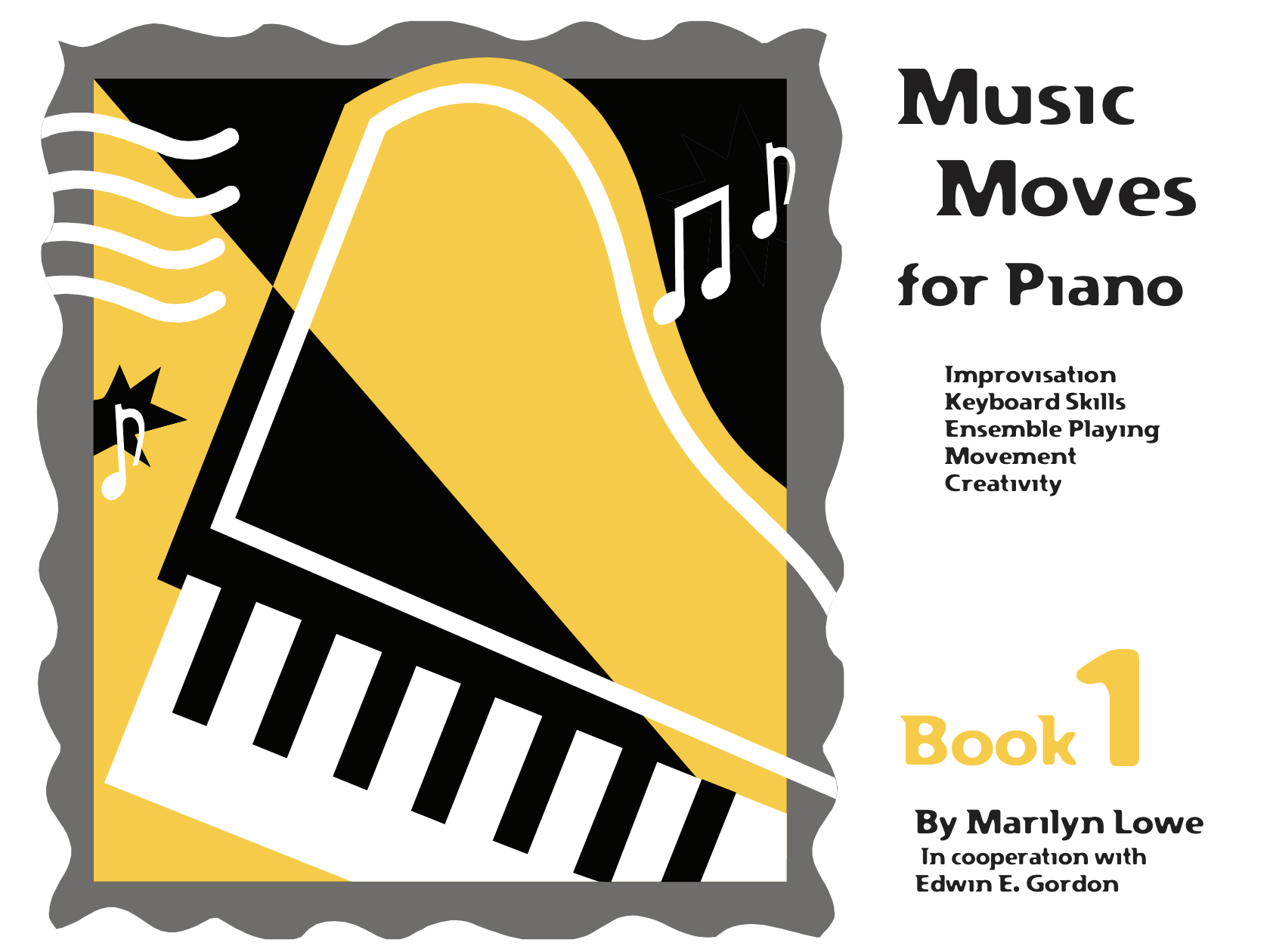typically ages 6+
Looking for piano classes for 4-6 year olds? Check out Keyboard Games!
Most students who are in private lessons are missing an essential ingredient to their growth: they are not learning how to think musically. They have not learned to ‘audiate’ music- and the process of audiation is essential for developing musicianship.
Audiation is to music what thought is to language and visualization is to sight.
What is Music Moves for Piano? Music Moves for Piano is a piano series written by Marilyn White Lowe to apply audiation-based learning sequences to piano instruction. Our teachers include individualized instruction within a group setting. These lessons are designed to begin once a student completes Keyboard Games books A and B, though some exceptions are made for older students to begin here. In Books 1-5, lesson activities follow a sequential, research-based approach to how children best learn music. Our teachers encourage students to listen, think, move, sing, improvise and perform with their piano pieces.
What is Audiation? Students in the Music Moves for Piano program learn music through audiation, which is a cognitive process by which the brain gives meaning to musical sounds. Audiation is the musical equivalent of thinking in language. There is a sequential process to learning how to audiate, which is similar to the process by which a child learns to think and speak in their native language. Imagine how much context a child receives hearing other people speak in their native language before they begin to converse with another human or truly think for themselves!
Years of constant reinforcement with their language are necessary for a child to learn how to think and speak, and the same goes with music! Before a child learns to play a piece on the piano, they spend time away from the piano, learning how to audiate their piece through singing, moving, and careful pattern instruction. This process brings meaning to their music making. As they grow in the program, students are also able to create, improvise and compose music of their own.
What happens during a Music Moves for Piano class? Each class is packed with carefully planned activities to support your child’s audiation process. The books are organized into units and each unit includes:
Lesson Time Objectives This overview of the lesson communicates to parents and students what was covered at the lesson and lists home practice and listening assignments. Students learn to read this column and understand, by writing and defining all new words in their journals. There are many new words, but once learned, these words continue to be used in the series.
Song to Sing Class activities familiarize students with the 'songs to sing' through movement, chanting rhythm patterns, and singing tonal patterns from the song. The 'song to sing' will be a performance piece later. Students learn that if they can sing it, they can play it.
Improvisation Projects Most unit pages include short improvisation or creative projects.
Performance Pieces and/or Scales, Cadences, Arpeggios Assignments are in the 'Lesson Time Objectives' column.
What is the sequencing of Books 1 - 5 and how are they different from each other? Click each book above to read more about what’s inside! We start all students in Keyboard Games and provide them with proper supplemental material, depending on their age.
When do you teach students to read music? Here at SWS Music School, we teach piano students to read music once they have had a rich, immersive experience with singing and creating patterns and have learned folk tunes by ear on the piano. A student who starts with us between the ages of 4 to 6 spends a year each in Keyboard Games A, B, and Book 1 and then roughly 2 years in Book 2 before they're ready to read music with understanding.
Research shows that students are ready to read music closer to age 11 and introducing reading before they have experienced enough with music can derail their musicianship and frustrate a student.
However, our students begin the process of emergent reading right away. We call this process “reading readiness” and for those students that begin in one of our earlier book levels, they will follow a sequential approach to learning how to read music in order to get them ready for the process of actually reading notation. We do not push notation on our students and our teachers are experts in knowing when a child is ready for the Reading and Writing Book (though, typically, we introduce the Reading and Writing book during Book 3).
• Learn more about Reading Readiness!












